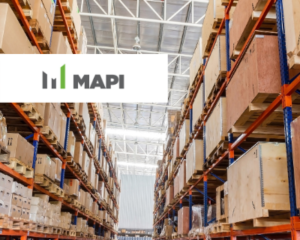Shift7 in MAPI : Digital Marketing Transformation for Manufacturers in a Post-Pandemic World
March 17th, 2021 / Tags: New Normal, Strategy, Andrew Walker, B2B eCommerce
 In the past, the roadblock to digital marketing transformation was “Why should we go digital?” Manufacturers felt little urgency to change a go to market strategy that was working just fine.
In the past, the roadblock to digital marketing transformation was “Why should we go digital?” Manufacturers felt little urgency to change a go to market strategy that was working just fine.
But in a flash, the pandemic made it clear how important (and lucrative) it can be to have healthy ecommerce channels producing online revenue streams.
If we could put a word to what we’ve seen with our manufacturing customers, it would have to be “acceleration.” We’ve seen unprecedented initiation of digital transformation in the manufacturing industry, with companies making smart investments in digital technologies, customer experiences, ecommerce, and digital marketing. It’s been long awaited, and wonderful to see.
In all likelihood, most functions of your business had some degree of digital focus even before the pandemic. But the fact remains, accelerating to things like online sales or the digitization of your go-to-market model can be daunting prospects — overwhelming enough to be abandoned before they even begin.
“Why should we pursue a digital transformation?” was answered by COVID-19. “How should we pursue a digital transformation?” is the new question. Let’s get into it.
GO-TO-MARKET MODEL IN THE POST-PANDEMIC WORLD
In the past 12 months, we all got punched in the face and had to think fast to stay on our feet. Manufacturing companies allocated marketing dollars to new digital initiatives (often diverting trade show budgets to get it done), assuming it would be a Band-Aid until things went back to “normal.” But now the dust has settled, and it’s clear the manufacturing industry is trending toward digital as the preferred customer experience.
So, in case it wasn’t already clear, your digital marketing efforts need to be ongoing. It can’t be a one-time-project. That said, it’s often more difficult to make a budget shift in large, complex, public companies. To address that, you can explore a funding model (a digital initiatives fund, if you will) tied to a goal of online revenue growth that allows you to move funds around with agility. Regardless, organizations need to think of digital investments as an ongoing line item in the income statement.
Now let’s discuss how those digital funds should be spent.
Three Choices
Every manufacturer evaluating online growth strategies weighs one or more of the following:
Growing ecommerce through existing or new distribution channels
Think: Amazon, Zoro, Grainger… even Wayfair, Target.com, Lowes.com. At Shift7 Digital, we have clients experiencing tremendous growth through distribution channels like these – more than doubling year-over-year revenue when traditional distribution channels are relatively flat. To do this right, it starts with a channel prioritization that’s made possible by an in-depth assessment. You’ll learn the fit and capability all potential distributor partners have, and you’ll assess the growth potential and prioritize your partners based on that. And once you’re running, there are more tools than ever before to manage the brand experience and gain valuable insights even after customers leave your own site.
Growing ecommerce through the launch/growth of B2B commerce or a wholesaler portal
Building B2B portals is a big driver right now because of the efficiency and the ability to capture first-party data through these direct interactions. Some of our clients use this model to sell directly to their large strategic accounts, augmenting the sales team relationship. Others start by strategically growing a large segment of low-revenue customers that are efficiently served through a pure online relationship. Either way, there is much more control over customer experience with the direct model. With distribution, you can enrich the experience and make your product content effective, but you don’t own the customer experience there. In this model, you do.
Growing ecommerce through the launch/growth of direct-to-consumer
Some B2B manufacturers are breaking new ground with B2C business models, a no-brainer if the goal is to gather insights about your end-user customers as you simultaneously grow revenue. Direct-to-consumer helps promote after-market products, parts, and accessories as well. As the world continues to evolve, we believe this will become a must-have channel for manufacturers.
If you take one thing away after you leave this page, let it be the knowledge that your customers’ digital experience is paramount, and regardless of channel, you have a responsibility to shape it for growth. For all its complexities, B2B manufacturing business is still conducted by humans, after all. And every one of us prefers to shop digitally.
As businesses, it’s on us to always meet our customers where they are.
This article first appeared in Manufacturers Alliance for Productivity & Innovation